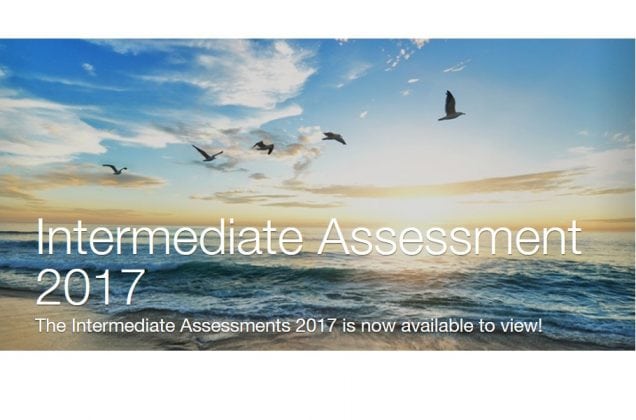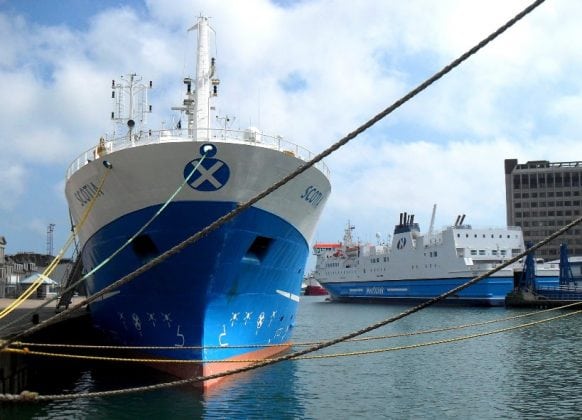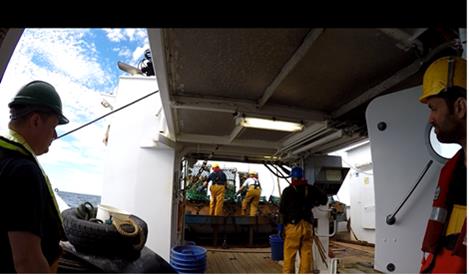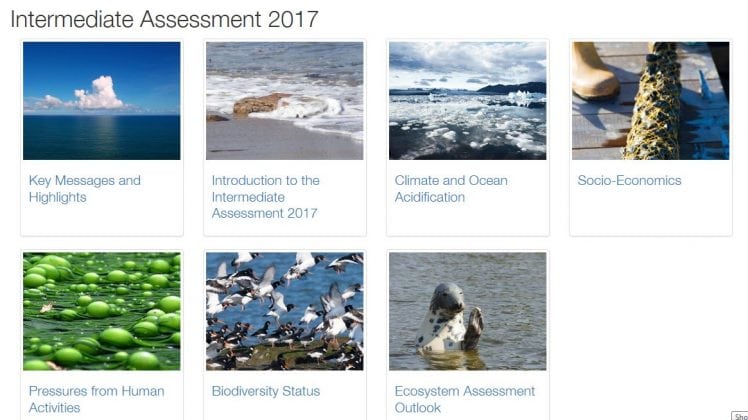Marine
-
IA2017 – Contaminant concentrations are decreasing, but concerns remain
7th August 2017 by Marine Scotland Communications

OSPAR countries have made significant efforts to reduce discharges, emissions, and losses of contaminants to both air and water. The effect of these efforts is clearly visible in reduced inputs to the Greater North Sea. The observed decreases in contaminant release from land-based sources and the offshore oil and gas industry show the continued progress...
-
Taking PAM to visit Rosemary Bank
2nd August 2017 by Marine Scotland Communications

Figure 1: Map showing approximate location for mooring deployment and transects for each zone Duration: 31 July to 7 August 2017 Fishing Gear: 2 x bird observer boxes (plus rubber matting) 1 x passive acoustic device and moorings Objectives To deploy a passive acoustic device on Rosemary Bank To collect data on bird and marine...
-
IA2017 – Radioactive discharges from the nuclear sector have decreased
31st July 2017 by Marine Scotland Communications

OSPAR collects data on authorised discharges and environmental activity concentrations for several radionuclides. For the purpose of evaluation, OSPAR distinguishes those radionuclides that emit alpha radiation (total alpha activity) and those that emit beta radiation (total beta activity). Discharges from fuel reprocessing plants are much reduced but remain the dominant source of discharges from the...
-
IA2017 – Fish communities show signs of recovery in some areas
24th July 2017 by Marine Scotland Communications

Fish communities form a major element of marine biodiversity and are a key feature in marine foodwebs. Fisheries can thus have a major impact on marine biodiversity. The last OSPAR Quality Status Report (QSR 2010) highlighted, among other issues, that depletion of key predator and prey species and disruption of the marine foodweb were worrying...
-
IA2017 – Benthic habitats affected by bottom fisheries
17th July 2017 by Marine Scotland Communications

OSPAR is committed to protecting and conserving ecosystems and biodiversity through the management of human activities and is guided by an ecosystem-based approach. Benthic habitats play a key role in marine ecosystems because marine species rely directly or indirectly on the seafloor to feed, hide, rest or reproduce. The last OSPAR Quality Status Report (QSR...
-
Scallop Dredging and Octopus Spotting
14th July 2017 by Marine Directorate Communications

Last month our Ships Co-ordinator joined the Alba na Mara for a day to observe colleagues during the East Coast Scallop Dredging Survey 0917A. The aim of this visit was to get a better understanding of the scallop dredging process, the equipment and techniques used, and the challenges associated with this sampling method. The feedback...
-
IA2017 – Marine birds in trouble
10th July 2017 by Marine Scotland Communications

Marine birds are valuable indicators of ecosystem condition. OSPAR assesses the abundance and breeding success of marine birds. In the Norwegian Arctic, the Greater North Sea and the Celtic Seas, there has been a considerable (>20%) drop in abundance compared to the levels observed 25 years ago, for more than a quarter of the marine...
-
IA2017 – The network of OSPAR Marine Protected Areas is expanding
3rd July 2017 by Marine Scotland Communications
Considerable progress has been made in developing OSPAR’s Marine Protected Area (MPA) network. Since the last OSPAR Quality Status Report (QSR 2010), a further 289 MPAs have been added to the network, bringing the total number to 448. MPAs now cover 5.9% of the OSPAR Maritime Area compared with a total coverage of only 1.1%...
-
OSPAR’s IA2017 – What is it?
30th June 2017 by Marine Scotland Communications

The OSPAR Intermediate Assessment 2017 (or IA2017K) is an assessment of the marine environment of the North-East Atlantic and its current status. It’s not the first time they’ve done this – its previous holistic assessment, the QSR 2010, was a culmination of ten years of joint assessment and monitoring by OSPAR Contracting Parties and seven years on, with...
-
Latest update from the MRV Scotia survey 0717S – the 7th of the year
15th June 2017 by Marine Scotland Communications

Duration: 6- 26 June 2017 Gear onboard: 2 x Scotia BT175 80mm prawn trawls 2 x Day grabs and 1 x sieving table 2 x towed UWTV sledges 2 x 600m umbilical towing cables and associated TV equipment (including back up) Objectives To obtain estimates of the abundance and distribution of Nephrops burrow complexes at...




